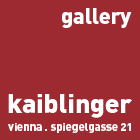Graphic arts
Penck A.R.
Dresden *1939
A. R. Penck is internationally known for his so-called "standard pictures", which are characterized by an universal sign and symbol language that he invented. He is referred to as the father of the "Neue Wilden".
Painter, graphic artist and sculptor. A. R. Penck was born as Ralf Winker in 1939 in Dresden. From 1953 to 1954 he visited painting and drawing lessons from Strawalde (Jürgen Böttcher) and from 1955 to 1956 he was an apprentice draftsman at DEWAG. When he subsequently applied to the art academies in Dresden and East Berlin, he was turned down four times due to his membership in the artist group “Erste Phalanx Nedserd”.
Penck found an almost inexhaustible source of inspiration for his own creative work in early cave paintings, graffiti and calligraphy. He became known for his style of painting in stick figure format, which he derived from graphic symbols. They represent human sensitivities in a reduced way. He worked on his art with large brushstrokes.
Despite the ban on exhibitions, the artist took part in documenta 5 in 1972 and exhibited his works together with Joseph Beuys in Munich. Although the following of his art grew, Penck got bigger and bigger problems with the state security service of the DDR. These culminated in the destruction of his studio inventory in 1979.
After his expatriation the following year, he made his big international breakthrough.
In 1984, the multiple award-winning artist took part in the Venice Biennale. Penck, who made wooden sculptures since the late 1970s and bronze sculptures from the early 1980s, made marble sculptures in Carrara (Italy) in 1986. From 1988 to 2003, Penck, who lived alternately in different cities around the world, was a professor at the Düsseldorf Art Academy.


